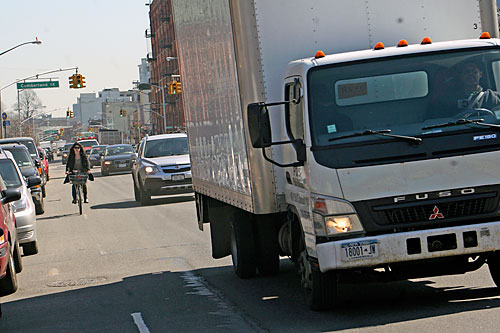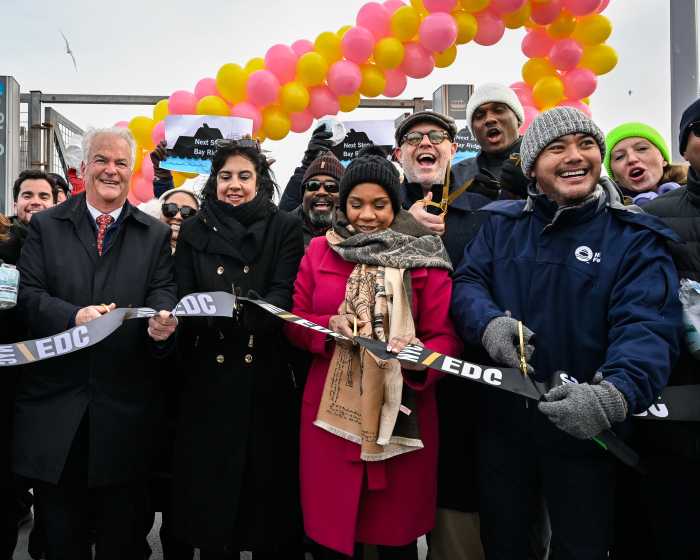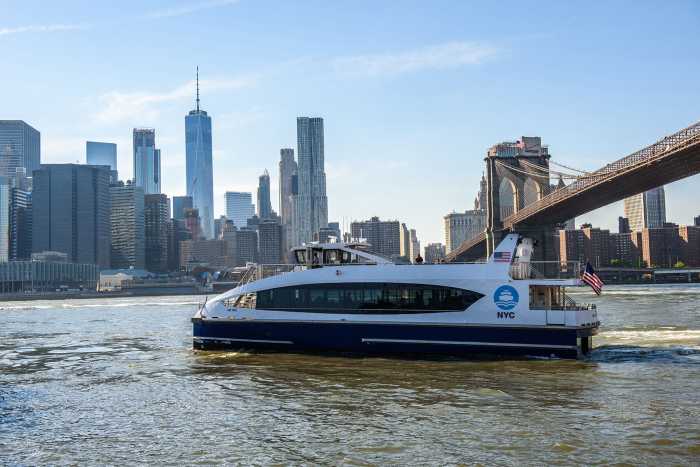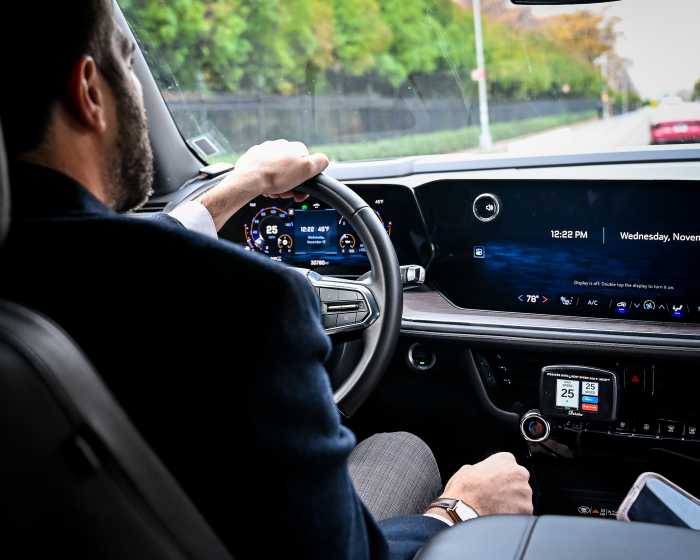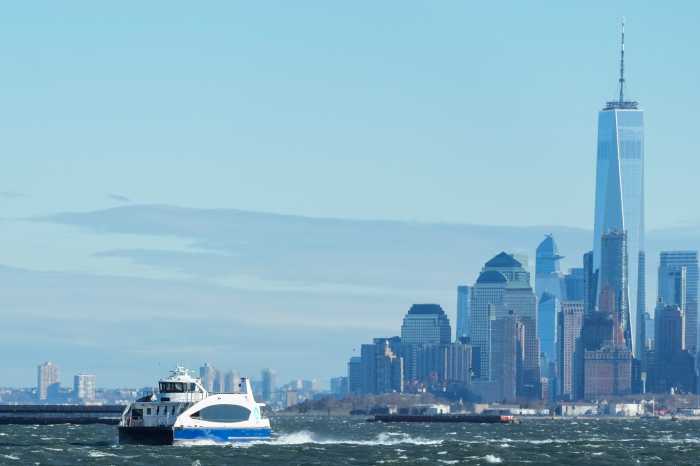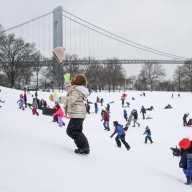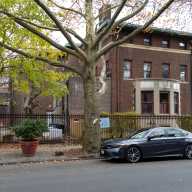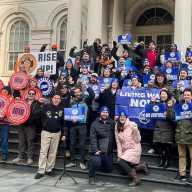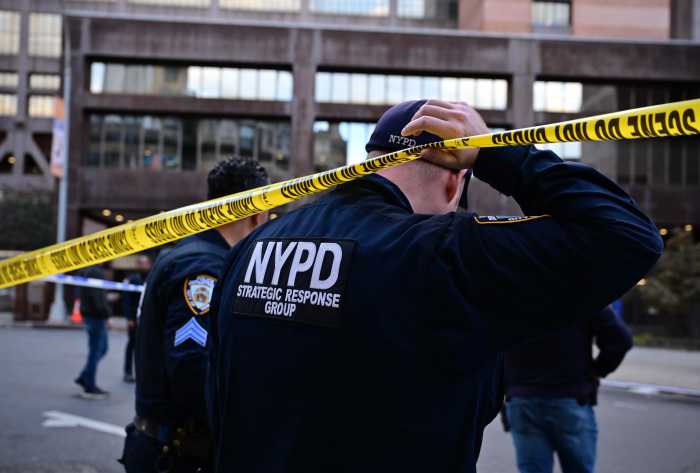The city has abandoned its controversial plan to convert Flushing Avenue to a one-way street to accommodate a two-way bike lane, unveiling a new scheme this week that will maintain two-way car flow, yet still provide for a bike lane.
Department of Transportation officials revealed the new proposal to Community Board 2 on Tuesday night — providing two-way car scheme between Kent Avenue and Navy Street, yet adding a two-way protected bike lane, a jersey barrier and buffer zones between cars and their cycling nemeses (and vice-versa!).
“We have really gone out of our way on this one — we’re trying to make everyone happy,” said Ted Wright, senior project manager for the Brooklyn Waterfront Greenway project that’s overseen by the Department of Transportation.
In March, the department proposed to slow down traffic and ease high volumes of bikers by converting traffic flow to one-way going westbound on the stretch. But Wright said the department got plenty of flak from drivers and residents of the nearby Navy Yard, who would be forced to bow to bikers and exit Flushing Avenue in one direction.
If approved, the new proposal would work in two phases. The first — which includes two different sets of bike and buffer elements on either side of Washington Avenue — is a quick fix that’s within the department’s current budget, and would provide “safety right now,” Wright said.
The second phase would combine the two segments of the stretch over a few years, adding additional barrier structures and foliage along its medians.
Here’s how the interim phase would work: West of Washington Avenue (the longer stretch), workers would simply install a bike lane on each side of the road, with a three-foot barrier between cars and cyclists. East of the avenue — which is heavily trafficked from the Brooklyn-Queens Expressway and Williamsburg — there would be a two-way bike lane on one side protected by a jersey barrier, as well as an additional bike lane on the other side of the road and a parking lane.
Wright told the committee that the third bike lane was to benefit the inevitable bikers who chose the other side of the road, but later admitted that it’s really a temporary use to get ready for the build-out of the second phase. He also mentioned that the “heavily underused” Ryerson Street bus stop would be eliminated in the first phase.
The committee voted unanimously to support the first phase of the plan — though its vote is only advisory. Drivers at the meeting were content (or at least silent) about the proposal, and bikers said they are ready for the change.
“We can’t forget our long-term goal, which is to create a safe pathway for everyone going forward,” said Caroline Samponaro of Transportation Alternatives. “We support this.”


